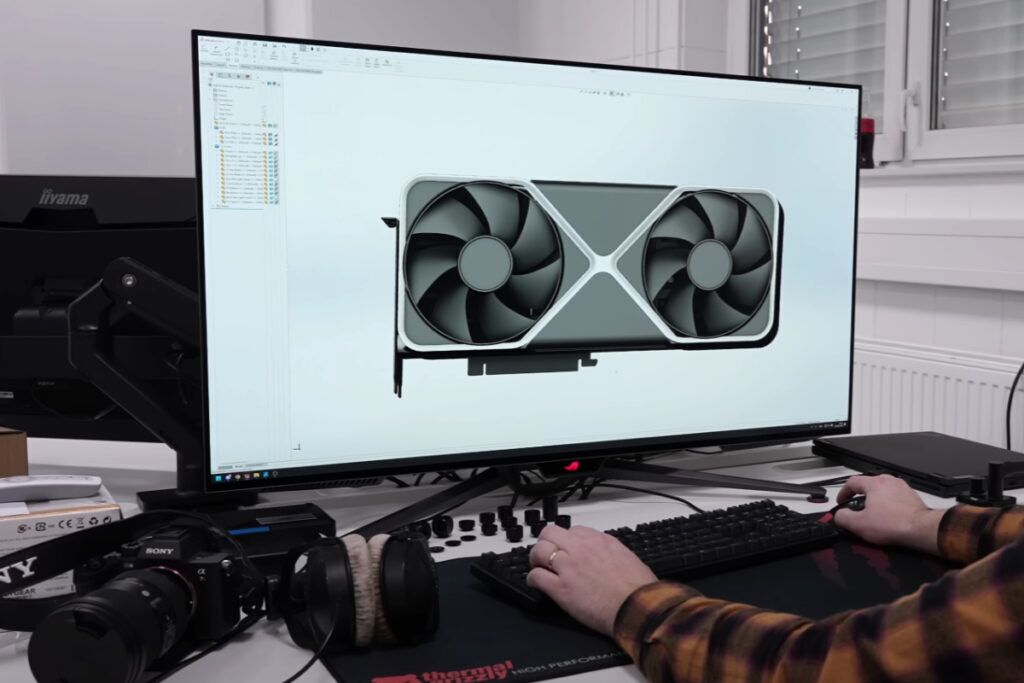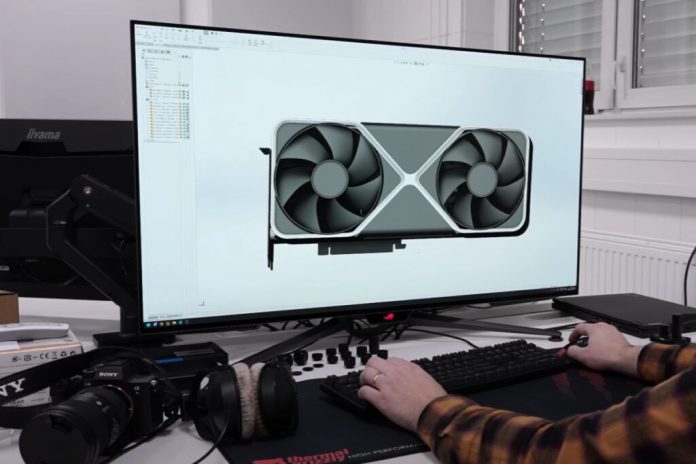There’s a little over two weeks to go before the RTX 5090 hits shelves on January 30th (according to Nvidia), and excitement has been building up for what will be the best graphics card on the market – as far as raw power goes. Following the GPU’s reveal at CES 2025 last week, a popular German YouTube named der8auer got straight to work attempting to reverse-engineer it.
The results are pretty impressive, at least on the outside. Looking at “all the parts that on the outside, I think we must be within half a millimeter” – of course, the internals of the card are much harder to judge, but they’ve had a good shot at it.
RTX 5090 built to scale in CAD software
This video is posted on der8auer’s English channel, so there’s no need for any translation in case you were wondering about that. The team analyzed the RTX 5090 based on photos, starting with front and top-down images, and ended up turning it into a CAD model; a 3D render of the GPU. Since no one can actually show off a hands-on look at the graphics card yet – the embargo is just over a week away at the time of writing – this is a pretty close representation to check out instead.

Outside of the looks alone, der8auer goes into more detail regarding the impressive design of the flagship card. For instance, the radiator design is something that stands out in particular, “every single fin is bent a little bit different” – the first one has a much stronger curvature, gradually straightening out for some kind of cooling optimization beyond our expertise. This implies that Nvidia had to design 58 individual stamping tools, one for each fin’s shape. Little details like these reveal the kind of attention to detail that goes into designing a state-of-the-art piece of hardware.
If you want to see more about the whole reverse engineering process, see the video below on der8auer EN.

